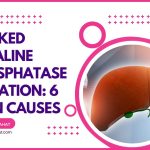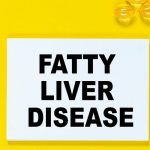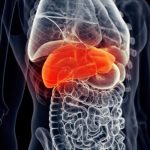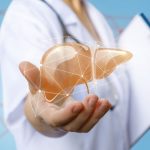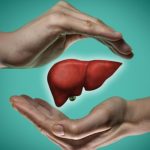7 Main Causes of Slightly Elevated Bilirubin in Adults.
Our content is not intended nor recommended as a substitute for medical advice by your doctor. Use for informational purposes only.
Slightly elevated bilirubin levels is a common accidental discovery during blood work up.
Too many causes can cause such a condition. Today, we will discuss the 7 main causes of this condition.
The main causes of slightly elevated bilirubin levels include chronic hepatitis, Gilbert syndrome, hemolytic anemia, some medications, liver cirrhosis, congestive hepatopathy, and partial or early stages of bile duct obstruction.
1. Chronic hepatitis.
Chronic hepatitis is a chronic inflammation of the liver (often lasting for six months or more).
Unlike acute hepatitis (which causes markedly elevated bilirubin levels), chronic hepatitis patients often have normal or slightly elevated bilirubin levels.
Chronic hepatitis is one of the most common liver diseases with various causes.
The most common causes of chronic hepatitis that may cause a slight elevation in bilirubin levels include:
- Chronic nonalcoholic steatohepatitis (NASH or fatty liver with inflammation).
- Chronic alcoholic hepatitis.
- Chronic hepatitis C.
- Chronic hepatitis B.
- Autoimmune hepatitis.
The above list is not a complete list of the causes. However, Those causes are responsible for more than 95% of the cases of chronic hepatitis.
Slightly elevated bilirubin levels in chronic hepatitis:
In patients with chronic hepatitis, a mild to moderate increase in liver enzymes (ALT and AST) is often present. However, bilirubin levels are either not affected or become only slightly elevated.
The reference ranges for bilirubin levels is between 0.0 to 1.0 mg/dL (0 to 17 micromol/L) (reference).
Any bilirubin levels above 1 or 1.2 mg/dL are considered elevated bilirubin levels.
Slightly elevated bilirubin levels often don’t cause jaundice. However, noticeable jaundice often occurs at 2.5 to 3 mg/dL or more bilirubin levels.
Does slightly elevated jaundice correlate with the severity of chronic hepatitis?
Often, chronic hepatitis due to viruses, NASH, or alcohol cause only a slight elevation in the liver enzymes such as ALT and AST. The major part of patients with chronic hepatitis typically has normal bilirubin levels.
However, When there is a slight elevation in the bilirubin (for example, bilirubin levels of 1-3 mg/dL, this often means one of two things:
- A more severe chronic hepatitis: Severe inflammation often causes more swelling of the liver cells, which leads to more compression on the micro-canals that transport bile inside the liver with consequent slight elevation in bilirubin.
- Progression to liver cirrhosis: patients with poorly controlled chronic hepatitis eventually progress to cirrhosis. This process often takes years or decades if chronic hepatitis is left untreated.
A new elevation of bilirubin in patients with chronic hepatitis (even if it’s mild) should be taken seriously. Mostly it means an increased severity of the disease or poor control of the disease.
2. Gilbert syndrome.
Gilbert syndrome (also known as familial non-hemolytic jaundice) is a widespread inherited genetic condition that affects mainly men.
Gilbert syndrome is one of the most common causes of accidentally discovered slightly elevated bilirubin.
It occurs due to a gene defect that controls an enzyme responsible for bilirubin processing. As a result of the gene defect, patients persistently have mild elevations of bilirubin with a perfectly functional liver.
It is very common. At least one in every 20 persons has gilbert syndrome. Its prevalence ranges from 4% to 17% in certain populations (reference).
Often consider Gilbert syndrome if you accidentally discover a slightly elevated bilirubin level with normal liver enzymes.
Symptoms:
- Most people with Gilbert syndrome are Asymptomatic.
- The condition is often discovered accidentally during routine blood work.
- People with Gilbert syndrome often don’t have jaundice because the elevation in bilirubin is slight.
- Jaundice may appear in certain situations, such as:
– Fasting.
– Dehydration.
– During illness and infections.
– Lack of sleep.
– Vigorous exercise. - It is more common in males than females (M:F ratio is about 4:1).
- People with Gilbert syndrome often live an entirely normal life.
- The only drawback of this genetic condition is that you may have a more risk of certain medication side effects such as paracetamol, irinotecan, and a few other medications (Learn More).
How is Gilbert syndrome diagnosed?
Here are the typical findings found in patients with Gilbert syndrome:
- A slightly elevated total bilirubin levels (typically less than 3 mg/dL).
- The elevation is mainly of the unconjugated (indirect) type of bilirubin).
- Otherwise, normal liver tests (normal liver enzymes and albumin and prothrombin time).
- Absence of evidence of hemolytic anemia (normal hemoglobin levels, normal reticulocyte count).
- Following up on your laboratory tests for a year or two confirms the condition (isolated mild elevation of total bilirubin with otherwise normal tests).
- A gene test is present to confirm the condition, and it is often not needed.
Gilbert Syndrome is a benign condition. Your liver will remain perfectly healthy throughout your life with no long-term consequences of the disease.
No treatment is needed for such a condition. Just avoid the medications known to cause problems with the disease.
3. Chronic hemolytic anemia.
Anemia results from either:
- A decreased nutritional supply (as with iron, folic acid, and B12 deficiency anemia), or
- Increased destruction of red blood cells (RBCs).
The condition of an increased rate of red blood cell (RBCs) destruction beyond your body’s ability to form new cells is called (Hemolytic anemia).
Hemolytic anemia (particularly the chronic types) is a common cause of slightly elevated bilirubin levels. Patients with slightly elevated bilirubin levels due to hemolysis often have symptoms of anemia (see later).
Common causes of hemolytic anemia include (reference):
A. inherited type:
- In the inherited types of hemolytic anemia, a gene defect causes abnormal RBCs or hemoglobin.
- The commonest types include thalassemia and sickle cell anemia.
B. Acquired (secondary to disease or drug):
- Some medications include antimalarials drugs, paracetamol, sulfa antibiotics, penicillins, etc.
- Some infections (particularly viral infections).
- Certain cancers and blood malignancies such as leukemia.
- Autoimmune hemolytic anemia.
- Hypersplenism (overactive spleen).
- A reaction to blood transfusion.
- Mechanical heart valves.
Symptoms and features suggestive of hemolytic anemia:
- Jaundice (yellowish color of the skin and eye whites).
- The stool and urine color are not affected in mild cases.
- Symptoms of anemia such as fatigue, shortness of breath, poor effort tolerance, easy fatigue, headaches, and pale skin.
- An occasional increase in the symptoms of anemia and jaundice may occur due to the episodic nature of destructions (hemolysis).
- Some people may complain of fullness or discomfort in the upper abdomen due to enlarged liver and/or spleen.
- Laboratory tests show elevated bilirubin levels (often mild in chronic cases), with anemia (low hemoglobin) and evidence of hemolysis (such as high reticulocyte count and low hemoglobin).
- Some investigations may reveal the cause, such as bone marrow aspiration, hemoglobin electrophoresis, etc.
Treatment of hemolytic anemia is according to its type.
The inherited types such as thalassemia and sickle cell disease are lifelong conditions. Therefore, the treatment is often conservative, with occasional blood transfusion.
In the secondary types, the treatment is often directed towards the cause, such as treatment of underlying malignancy, giving steroids for immune hemolytic anemia, etc.
4. Medications.
Medications are an important and often overlooked cause of elevated bilirubin levels.
Either recent or chronic drug use can result in alternations in your liver function tests, including mild elevations of bilirubin.
The list of medications that can affect your liver is enormous. More than 1000 medications can cause liver affections (reference).
Drugs cause three main patterns:
- Hepatocellular injury (elevated liver enzymes such as ALT and AST).
- Cholestatic injury (elevated bilirubin levels).
- Mixed (elevations in both liver enzymes and bilirubin).
Both cholestatic and mixed patterns of drug-induced liver injury can cause slight elevations in bilirubin levels (particularly with chronic medications.
Common examples include:
- Some antibiotics such as ampicillin, nitrofurantoin, rifampin, and others.
- Cyclosporine.
- Anabolic steriods.
- Oral contraceptive pills.
- Chlorpromazine.
- Imipramine.
- Gold salts.
The table below illustrates different medications that cause high and slightly elevated bilirubin levels (reference).
5. End-stage liver disease (liver cirrhosis).
Liver cirrhosis refers to scarring (fibrosis) of the liver tissue caused by long-term chronic or recurrent liver damage.
Liver cirrhosis results from any chronic inflammatory disease of the liver, such as viral infections, alcoholic hepatitis, nonalcoholic fatty liver disease, autoimmune hepatitis, etc.
Patients with liver cirrhosis often have a mild degree of elevated bilirubin levels due to the abnormal liver tissue. However, the more advanced the stage of liver cirrhosis, the more elevation happens in bilirubin.
Liver cirrhosis often is an unmistakable clinical condition with obvious symptoms and signs such as:
- Jaundice.
- Swollen lower limbs.
- Swollen abdomen (ascites).
- Weight loss (muscle wasting).
- Advanced cases may have coma (hepatic encephalopathy), vomiting of blood, or passage of dark stool (due to bleeding varices).
- Dark urine, pale stools.
- Generalized fatigue, hair loss, and lethargy.
6. Liver congestion (congestive hepatopathy).
The liver drains its blood into a great vein called the superior vena cava (which enters the right side of the heart).
Patients with chronic right-sided heart failure or chronic lung diseases may have difficulty receiving blood from the inferior vena cava.
As a result, the liver becomes chronically engorged with blood (liver congestion). Chronic liver congestion often presents with mild elevations of bilirubin levels and liver enzymes.
Also, the liver is often enlarged, with discomfort or pain in the upper right abdomen.
Untreated liver congestion may end in liver cirrhosis (cardiac cirrhosis).
7. Partial or early biliary obstruction.
The bile inside your liver passes through the biliary system (bile ducts) to the duodenum (the first part of the small intestine).
Obstruction of the bile outflow (often due to common bile duct obstruction) from the liver results in increased bilirubin levels in the blood.
Many causes and conditions cause biliary duct obstruction; common causes include:
- A gallstone inside the common bile duct (often slips from the gallbladder).
- A pancreatic head cancer.
- A biliary cancer (cholangiocarcinoma).
- Bile duct narrowing (stricture).
The degree of the elevation of bilirubin depends on the degree of biliary obstruction (partial or complete) and its duration.
Although most cases of obstruction cause marked and progressive elevation in bilirubin levels, slightly elevated bilirubin can occur with:
- Partial (incomplete) bile duct obstruction by a tumor or stricture.
- Early days of complete obstruction may present with a mild increase in bilirubin.
The condition is often diagnosed by abdominal imaging (abdominal ultrasound, MRI, MRCP, or CT).
The elevation is mainly in the direct (conjugated) type of bilirubin. However, when the cause is a stone, there is often a severe form of biliary colic (learn more).
8. Other less common causes of slightly elevated bilirubin in adults.
- Liver cancer (hepatocellular carcinoma).
- Liver metastasis (other body’s tumors spreading into your liver).
- Large liver lesions such as large hemangiomas.
- Very early and recovery stages of acute hepatitis.
- Lymphomas.
- Metabolic liver diseases such as Wilsons and hemochromatosis.
- Primary biliary cholangitis and primary sclerosing cholangitis.
- Toxins such as aflatoxin, arsenic, phosphorus, etc.
- Rare liver infections such as TB, leptospirosis, amoebiasis, etc.
- Budd-chiarri syndrome.
- Veno-occlusive diseases.
Related:
- Dangerous bilirubin levels in adults (according to the cause).
Typical & Atypical Bilirubin levels in cirrhosis.
- Is it Normal to have a Small Trace of Bilirubin in Urine?
- Evidence-based
- Written by a doctor.

Related Posts:
- Typical & Atypical Bilirubin levels in cirrhosis…
- Does the pancreas Produce bile? & Why bilirubin is…
- 5 Causes of Elevated Liver Enzymes & Negative Ultrasound
- Bloated as Pregnant? 6 Main Causes & Treatments.
- 5 Main Causes of Throwing up Feeling after Eating…
- 5 Main causes of abdominal pain and blood in the urine
